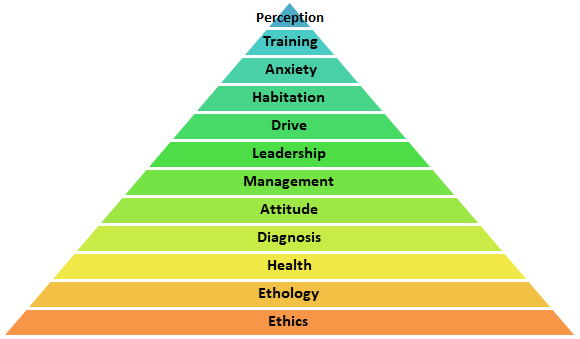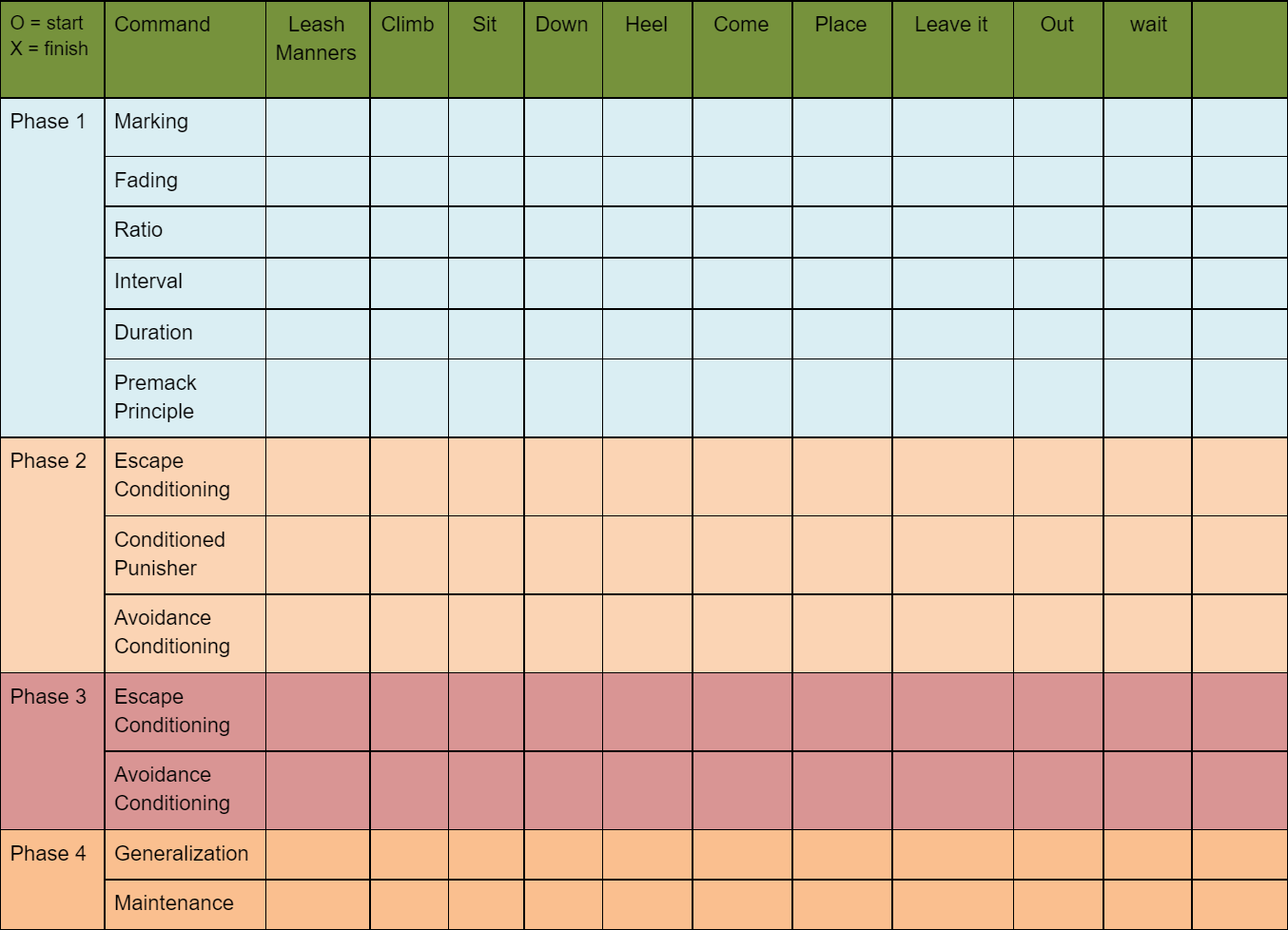Objectives
- How do we start our decision process in regards to what level/intensity of punishment to use during training plans?
Consider your foundation
- LIMA especially
- Can the behavior be addressed in other ways with better and longer lasting results?
- Cynopraxis
- Replacement behaviors addressed
- Know your checklist!
- mechanics
- Know your science to make informed decisions!
Studies on Punishment
Effects of Punishment Intensity During Variable Interval Reinforcement, Azrin 1960
Pigeons pecking a disk
- Level
- mild - full recovery after suppression
- moderate - full recovery after suppression
- severe - moderate suppression after recovery
- very severe
- Slight drop in weight nearly tripled the amount of rersponses!
Things to consider as a dog trainer?
- Housebreaking
- Invisible fence training
- Obedience training
- What is most LIMA?
- more moderate/severe stim or less severe/very severe stim?
- Design your plans accordingly, don't blindly mimic!!
- What is most LIMA?
Learning Resistance to Pain and Fear: Effects of Overlearning, Exposure, and Rewarded Exposure in Context, Miller 1960
- gradually increasing levels of shocks taught rats considerable reisitance to the stress of quite strong shocks
- Not the same results when outside of context (context is important!)
- Overtraining with reward slowed down response once exposed to shock
- How does this relate to other forms of stress resistance?
- pain,fear,fatigue,frustration, noise, temperatures, etc..
Things to considere as dog trainers?
- Housebreaking
- Invisible fence training
- Obedience training
- Other considerations outside of ecollar?
- protection training
- search and rescue dogs
- etc..
Recovery of Responses During Mild Punishment, Rachlin 1966
- Consider the effect of transient emotional state.
- Can be comparative to novel reinforcement
- Reward and punishment are symmetrical in their effects
Things to consider as a dog trainer?
- Consider the short term novel effect of punishment
- Competing motivaters (see chart)




Responses